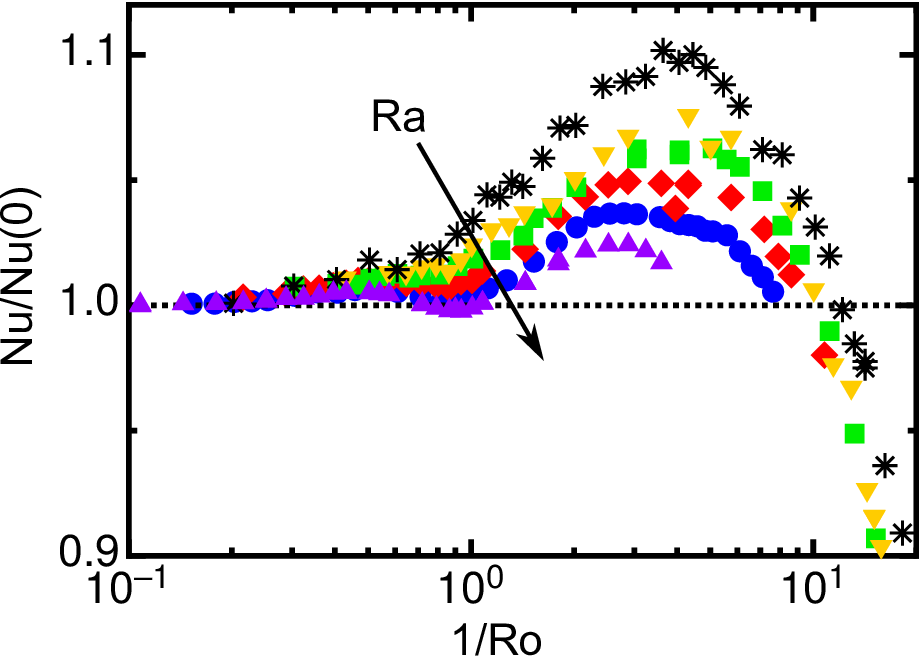Rotating Rayleigh–Bénard convection
In geo- and astrophysical systems, for example weather systems or the interior of planets and stars, thermal convection is heavily influenced by the rotation of their hosting bodies, e.g. the Earth. We study experimentally the impact of rotation on the flow structure and heat transport in Rayleigh-Bénard convection (RBC).
In general, Coriolis forces lead to a suppression of advective fluid motion and thus to a reduced vertical heat transport. However, at the vertical and the lateral boundaries, Ekman and Stewartson boundary layers form in which Ekman pumping takes place causing the heat transport to increase. Due to both mechanisms the heat transport is a non-monotonic function of the dimensionless rotation rate.
We study turbulent rotating convection in two different apparatuses. On is a cylindrical cell that is 2 m high and 1m in diameter, placed in the Uboot of Göttingen, and filled with SF6 of up to 19bar. Here we study convection at very large Ra (up to 1015) and Pr close to 0.8.
We also study rotating convection in water (Pr=5) using a 20cm high and also wide cylindrical cell. The cell is manufactured out of plexiglas. In a collaboration with the University of Strassbourg we optically investigate the velocity and temperature field using particle image velocity and fluorescence techniques.
 |
|
Vertical heat transport with rotation (Nu) compared to the heat transport without rotation (Nu(0)) for water (Pr=4.38) and different Ra as a function of the dimensionless rotation rate (i.e., the inverse Rossby number 1/Ro). For slow rotation the heat transport is enhanced. For faster rotation rates, the heat transport is reduced. The relative heat transport enhancement decreases with increasing Ra. Image adapted from [1]. |
[1] Weiss and Ahlers, Journ. Fluid Mech. 684, 407 (2011)
